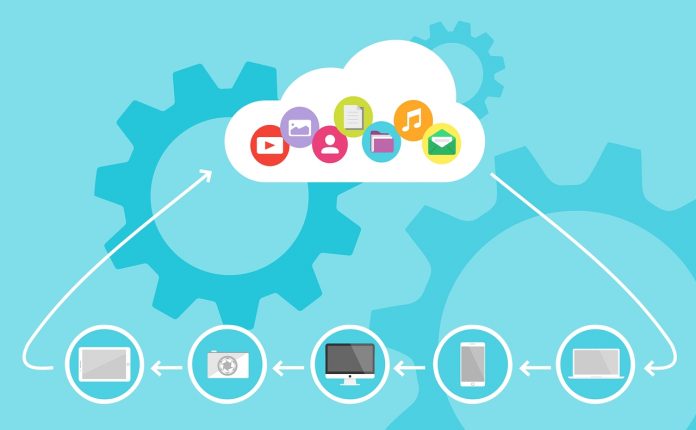Despite acknowledging and appreciating the various benefits that on-cloud HR solutions offer in contrast to on-premise ones, some organisations are unable to switch to or adopt on-cloud solutions. Here’s how to approach the concerns.
Hosting digital solutions on the cloud is not new anymore. However, the debate on whether it is better in comparison to the old-school on-premise solutions, is still hot. It’s one of the critical criteria to decide on when looking to digitise HRMS, but also one that determines the effectiveness and the outcome of the entire effort.
Now, although cloud-based HR solutions are gaining importance rapidly –especially among small to mid-sized businesses – there are some industries and organisations that still hesitate to accept the cloud as a better solution than on-premise systems, for instance, the BFSI sector.
A majority of organisations in the sector, despite acknowledging and appreciating the various benefits that on-cloud HR solutions offer in contrast to on-premise ones, are not able to switch to or adopt on-cloud solutions. HRKatha’s conversation with HR leaders from the industry revealed some of the major factors that prevent quick and easy adoption of on-cloud HR solutions in BFSI organisations.
Take a quick survey to see where your HR tech is with respect to others in the BFSI sector

Sriharsha Achar, executive director & chief people officer, Apollo Munich Health Insurance, shares that the IRDA (Insurance Regulatory and Development Authority), an autonomous regulatory body for the insurance sector in India, specifies that an insurance company can deploy an on-cloud solution, only if the cloud is hosted within the boundaries of India. “While it is specific to the insurance sector and it is to ensure data protection and integrity, we cannot but deploy an HR solution that’s on-cloud,” Achar specifies.
However, he appreciates the various benefits that come from hosting an HRMS on the cloud, in contrast to managing an on-premise system. He says, “On-cloud solutions are great in terms of providing flexibility of pay by use, whereas in-house systems are more expensive in terms of the infrastructural/hardware and maintenance cost. Also, it offers more ease of operations as the solution provider takes up the entire responsibility for managing and constantly upgrading the system.”
While Achar recognises the advantages, he also clarifies that the insurance sector cannot enjoy benefits until there’s a change in the regulations or there’s a solution on cloud that is able to meet the criteria, with all benefits intact.
On the other hand, a banking organisation, Barclays, seems to have partly adopted on-cloud solutions to manage some of its HR functions. Amit Vaish, director and head-HR, Barclays Technology, agrees that overall adoption of on-cloud HR solutions will be a little slow in the BFSI sector due to its data security and regulatory concerns, but he asserts that the industry in no way lags as compared to others and is picking up pace in terms of adopting the cloud.

Appreciating the benefits of solutions hosted on the cloud, Vaish says, “From a workforce standpoint, HR solutions hosted on the cloud are easy to use, with attractive user-friendly interfaces that are mobility enabled. The installation or deployment is also more convenient, in turn resulting in easy adoption.”
He adds that from a technological perspective, on-cloud solutions are way easier to maintain and upgrade, and enhance the overall workforce experience by offering high levels of integration across HR processes.
Take me to the Survey
Additionally, here are the aspects that an organisation can benefit from while deciding to deploy a digital solution, on-cloud:
Cost and scalabiity: It’s easier to predict cost to company for an on-cloud solution as the charges are per user and organisations need not spend on additional hardware, unlike in the case of on-premise solutions. However, in the longer run, the costs will vary, as the workforce grows. On the other hand, a solution on cloud could be more scalable as a team grows, because the organisation does not need to invest in setting up and maintaining a huge in-house system and can take up per requirement subscriptions of a cloud-based solution.
Implementation: Cloud solutions are quicker, easier and more convenient to implement as no additional hardware or systems are required to be established by the organisation. A third-party vendor provides access to the solution that can be easily downloaded through apps and interfaces on people’s mobiles or other devices.
Data security and inter-operability: While data security is something that organisations don’t like to pass on the control of, to someone else, cloud solutions nowadays are becoming increasingly conscious of the concerns and are complying with the best of security standards. With fine-grained, multi-layered security setups, just as there are face recognition tools in advanced smartphones, nowadays, on-cloud HR solutions also promise stringent security measures.
Configurability: Most cloud solutions available nowadays are fully configurable to the client requirements. However, at the same time, they also have some standard offerings. That means, quicker upgrades and more stability in the overall scheme of things. An on-cloud solution always remains updated with the new upgrades as everything is instant without any patching required, unlike the on-premise solutions.

Now, although each one has its own advantages and limitations, the cloud certainly offers more flexibility and user-friendliness, and makes for an easy choice.
Talking of the banking sector and its adoption of advanced solutions, Prakash Rao, chief experience officer & head, HCM business, PeopleStrong, shares that although the banking and financial services sector, was a late entrant into the HR SaaS bandwagon, it has finally started to pick up pace.
“The most critical factor has been the kind of experience that mobile and AI-based systems can deliver to a vastly distributed workforce. The best thing is the speed of adoption and user engagement in these organisations. Almost 30–40 per cent of the users we have added in the past eight to nine months are from this sector. We’ve seen early adoption by employees as high as 70 per cent and we expect these numbers to grow significantly,” he says.
Value our content... contribute towards our growth. Even a small contribution a month would be of great help for us.
Since eight years, we have been serving the industry through daily news and stories. Our content is free for all and we plan to keep it that way.
Support HRKatha. Pay Here (All it takes is a minute)



























